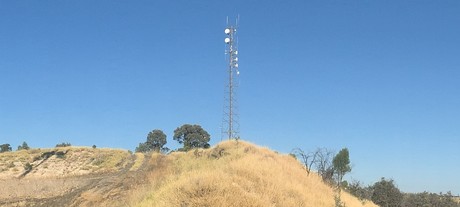QGC's outback TETRA network

Covering more than 8000 km2, QGC’s TETRA radio network is one of the largest in the world.
QGC is a natural gas explorer and producer focused on establishing the world’s first project to convert gas from coal seams into liquefied natural gas at the Queensland Curtis LNG plant.
Reliable communications are an essential occupational health and safety requirement at QGC, so operations cannot commence without them. The decision to build the communications network early delivered a competitive advantage for the company.
QGC’s extensive TETRA radio network covers the gas production area in the Surat Basin of southern Queensland. The company has more than 2500 wells spread over approximately 4000 km2, with a TETRA footprint covering more than double that area. The network also covers a 540 km underground pipeline to Gladstone and the Curtis Island plant near Gladstone, where gas is liquefied.
Built at a cost of $32 million, the system is now one of the largest TETRA networks in Australia, having expanded beyond its original scope to include all communications in the field while the organisation’s fibre network was deployed. The expansion ensured QGC met its exploration schedule by enabling the gathering of telemetry at wellheads and transmission of data in real time to command centres.
Motorola Solutions has provided more than 1200 radios, which make up approximately half the fleet of radios on-site. Motorola Solutions also provides managed services for all radios on-site, including third-party radios from other providers such as Cassidian and Selex, as well as the radio network and microwave links.

During installation of the network, Motorola took responsibility for the logistical and technical challenges of achieving interoperability between all radios regardless of provider. The company planned, managed and tested all third-party radios to ensure that functionality was consistent across all devices, and that the radios would perform in a similar or equivalent way.
Similarly, ongoing service and support is provided for all radios, irrespective of whether they are Motorola products or not.
The managed services contract ensures that the microwave links, which provide backup for fibre links, are always available. The microwave links began as the principle communication system in order to enable rapid deployment, then transitioned to a disaster recovery solution once the fibre network was in place. The reliability of the microwave links is critical because any damage to the fibre cable has an impact on the whole communications network, including the wells and internal IT processes. With downtime potentially costing millions of dollars per hour, reliability of the backup is vital.
Much of the area of QGC’s operations is not covered by mobile phone coverage, so in many places the TETRA network is the only option. The system enables QGC to contact all of its people all of the time, without the need to travel to an area of phone coverage, which has led to better use of manpower and greater efficiency.
Motorola Solutions has two personnel on-site on 14-day rotations to provide assistance every day of the year, able to provide repairs as required.
Customised rugged tech shaping the next era of defence comms
Rugged computing platforms are becoming central to how armed forces protect communication...
A guide to aquatic survival this summer
While most Australians are planning aquatic adventures this summer, less than a third are...
Maher Terminals enhancing operations with private wireless
Maher Terminals chose the Nokia Edge platform because it needed a secure, reliable,...




